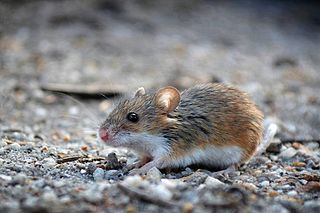 W
WThe African pygmy mouse is one of the smallest rodents. It is widespread within sub-Saharan Africa, and is kept as a pet in other parts of the world. Like the common house mouse, it is a member of the enormous superfamily Muroidea, which includes about 1000 different species.
 W
WThe African striped weasel, the lone member of its genus, is a small, black and white weasel native to sub-Saharan Africa.
 W
WAnsell's mole-rat is a species of rodent in the family Bathyergidae. It is endemic to Zambia. Its natural habitats are moist savanna and miombo forests. It is noted for its very long tunnels, up to 2.8 km (1.7 mi) for a single colony of only ten individuals.
 W
WThe sable antelope is an antelope which inhabits wooded savanna in East and Southern Africa, from the south of Kenya to South Africa, with a separate population in Angola.
 W
WThe chacma baboon, also known as the Cape baboon, is, like all other baboons, from the Old World monkey family. It is one of the largest of all monkeys. Located primarily in southern Africa, the chacma baboon has a wide variety of social behaviors, including a dominance hierarchy, collective foraging, adoption of young by females, and friendship pairings. These behaviors form parts of a complex evolutionary ecology. In general, the species is not threatened, but human population pressure has increased contact between humans and baboons. Hunting, trapping, and accidents kill or remove many baboons from the wild, thereby reducing baboon numbers and disrupting their social structure.
 W
WThe large-eared free-tailed bat is a species of bat in the family Molossidae found in Angola, Central African Republic, Democratic Republic of the Congo, Ivory Coast, Djibouti, Ethiopia, Ghana, Kenya, Malawi, Rwanda, South Africa, Tanzania, Uganda, Yemen, Zambia, and Zimbabwe, and possibly Madagascar. Its natural habitats are subtropical or tropical dry forest, subtropical or tropical moist lowland forest, subtropical or tropical moist montane forest, dry savanna, arable land, and plantations. It is threatened by habitat loss.
 W
WThe Mohol bushbaby is a species of primate in the family Galagidae which is native to mesic woodlands of the southern Afrotropics. It is physically very similar to the Senegal bushbaby, and was formerly considered to be its southern race. The two species differ markedly in their biology however, and no hybrids have been recorded in captivity.
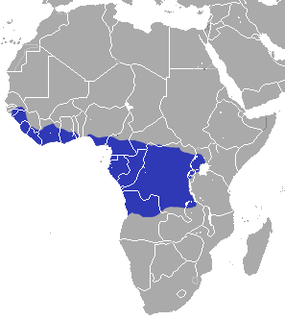 W
WThomas's bushbaby is a species of primate in the family Galagidae. It is found in Angola, Burundi, Cameroon, Democratic Republic of the Congo, Equatorial Guinea, Gabon, Kenya, Nigeria, Rwanda, Tanzania, Uganda, and Zambia.
 W
WThe Bushveld horseshoe bat is a species of bat in the family Rhinolophidae.
 W
WThe Cape wild dog, also known as the South African wild dog, Cape hunting dog, or the painted wolf, is the nominate subspecies of African wild dog native to Southern Africa.
 W
WThe Southeast African cheetah is the nominate cheetah subspecies native to East and Southern Africa. The Southern African cheetah lives mainly in the lowland areas and deserts of the Kalahari, the savannahs of Okavango Delta, and the grasslands of the Transvaal region in South Africa. In Namibia, cheetahs are mostly found in farmlands.
 W
WThe Angola colobus, Angolan black-and-white colobus or Angolan colobus, is a primate species of Old World monkey belonging to the genus Colobus.
 W
WCrawshay's zebra is a subspecies of the plains zebra native to eastern Zambia, east of the Luangwa River, Malawi, southeastern Tanzania, and northern Mozambique south to the Gorongoza District. Crawshay's zebras can be distinguished from other subspecies of plains zebras in that its lower incisors lack an infundibulum. Crawshay's zebra has very narrow stripes compared to other forms of the plains zebra.
 W
WD'Anchieta's fruit bat is a species of megabat in the family Pteropodidae. It is the only species in the genus Plerotes. It is found in Angola, Democratic Republic of the Congo, Malawi, and Zambia, where it lives in subtropical or tropical dry forests, dry savanna, and moist savanna. It is listed as Data Deficient on the IUCN Red List. The scientific and common names for the species commemorate José Alberto de Oliveira Anchieta, who is also honoured in the names of Anchieta's Pipistrelle and the Angolan Vlei Rat. It was described in 1900 by Antero Frederico de Seabra, under the name Epomorphus anchietae.
 W
WThe common eland, also known as the southern eland or eland antelope, is a savannah and plains antelope found in East and Southern Africa. It is a species of the family Bovidae and genus Taurotragus. An adult male is around 1.6 metres (5') tall at the shoulder and can weigh up to 942 kg (2,077 lb) with an average of 500–600 kg (1,100–1,300 lb), 340–445 kg (750–981 lb) for females). It is the second largest antelope in the world, being slightly smaller on average than the giant eland. It was scientifically described by Peter Simon Pallas in 1766.
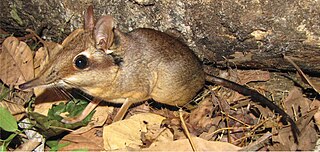 W
WThe four-toed elephant shrew or four-toed sengi is the only living species in the genus Petrodromus, which together with five other extant genera Rhynchocyon, Macroscelides, Petrosaltator, Galegeeska and Elephantulus constitutes the order Macroscelidea. This species is only found in particular regions in Africa and is smaller in size compared to its relatives. A comprehensive recording of this species is lacking.
 W
WThe bat-eared fox is a species of fox found on the African savanna. It is the only extant species of the genus Otocyon and considered a basal canid species. Fossil records show this canid to first appear during the middle Pleistocene.
 W
WThe brown greater galago, also known as the large-eared greater galago or thick-tailed galago, is a nocturnal primate, the largest in the family of galagos. As opposed to smaller galago species it would climb, walk or run rather than leap.
 W
WThe Angolan genet or miombo genet is a genet species endemic to Southern Africa. It is considered common in this region and therefore listed as Least Concern in the IUCN Red List. Little is known about its ecology.
 W
WThe Angolan giraffe, also known as the Namibian giraffe, is a subspecies of giraffe that is found in northern Namibia, south-western Zambia, Botswana, and western Zimbabwe.
 W
WGrant's zebra is the smallest of the seven subspecies of the plains zebra. This subspecies represents the zebra form of the Serengeti-Mara ecosystem.
 W
WThe greater cane rat is one of two species of cane rats, a small family of African hystricognath rodents. The cane rat lives by reed-beds and riverbanks in Sub-Saharan Africa. Cane rats can grow to nearly 60 cm (2.0 ft) in length and weigh a little less than 8.5 kg (19 lb). It has rounded ears, a short nose, and coarse bristly hair. Its forefeet are smaller than its hind feet, each with three toes.
 W
WLichtenstein's hartebeest is a subspecies of the hartebeest antelope that dwells in savannahs and floodplains of Southeastern-Central Africa. It is sometimes classified as a unique species Sigmoceros lichtensteinii.
 W
WThe klipspringer is a small antelope found in eastern and southern Africa. The sole member of its genus, the klipspringer was first described by German zoologist Eberhard August Wilhelm von Zimmermann in 1783. The klipspringer is a small, sturdy antelope; it reaches 43–60 centimetres at the shoulder and weighs from 8 to 18 kilograms. The coat of the klipspringer, yellowish gray to reddish brown, acts as an efficient camouflage in its rocky habitat. Unlike most other antelopes, the klipspringer has a thick and coarse coat with hollow, brittle hairs. The horns, short and spiky, typically measure 7.5–9 cm.
 W
WThe greater kudu is a woodland antelope found throughout eastern and southern Africa. Despite occupying such widespread territory, they are sparsely populated in most areas due to declining habitat, deforestation, and poaching. The greater kudu is one of two species commonly known as kudu, the other being the lesser kudu, T. imberbis.
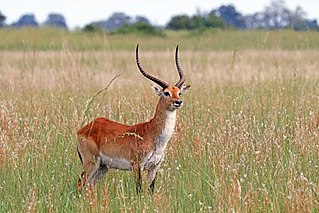 W
WThe lechwe, red lechwe or southern lechwe, is an antelope found in wetlands of south central Africa.
 W
WThe malbrouck is an Old World primate from Africa that belongs to the genus Chlorocebus. The species is sometimes classified as a subspecies of the vervet monkey, or of the widespread grivet.
 W
WThe common dwarf mongoose is a mongoose species native to Angola, northern Namibia, KwaZulu-Natal in South Africa, Zambia and East Africa. It is part of the genus Helogale and as such related to Helogale hirtula.
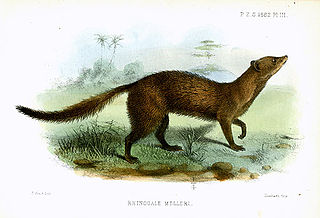 W
WMeller's mongoose is a species of mongoose found in Africa. It occurs in Democratic Republic of the Congo, Malawi, Mozambique, South Africa, Swaziland, Tanzania, Zambia and Zimbabwe. It is the only member of the genus Rhynchogale.
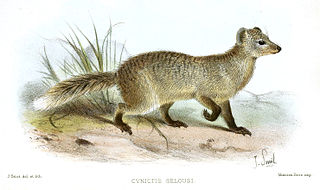 W
WSelous's mongoose is a mongoose species native to Southern Africa. It is the only member of the genus Paracynictis.
 W
WThe blue monkey or diademed monkey is a species of Old World monkey native to Central and East Africa, ranging from the upper Congo River basin east to the East African Rift and south to northern Angola and Zambia. It sometimes includes Sykes', silver, and golden monkeys as subspecies.
 W
WThe red-tailed monkey, also known as the black-cheeked white-nosed monkey, red-tailed guenon, redtail monkey, or Schmidt's guenon is a species of primate in the family Cercopithecidae.
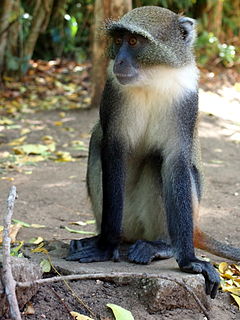 W
WSykes' monkey, also known as the white-throated monkey or Samango monkey, is an Old World monkey found between Ethiopia and South Africa, including south and east Democratic Republic of Congo. It is named after English naturalist Colonel William Henry Sykes (1790-1872), and has been considered conspecific with the blue monkey, but has a large white patch on the throat and upper chest, and a grizzled cap.
 W
WThe vervet monkey, or simply vervet, is an Old World monkey of the family Cercopithecidae native to Africa. The term "vervet" is also used to refer to all the members of the genus Chlorocebus. The five distinct subspecies can be found mostly throughout Southern Africa, as well as some of the eastern countries. Vervets were introduced to Florida, St. Kitts and Nevis, and Cape Verde. These mostly herbivorous monkeys have black faces and grey body hair color, ranging in body length from about 40 cm (16 in) for females, to about 50 cm (20 in) for males.
 W
WPercival's trident bat is a species of bat in the family Hipposideridae. It is monotypic within the genus Cloeotis. It is found in Botswana, Democratic Republic of the Congo, Kenya, Mozambique, South Africa, Swaziland, Tanzania, Zambia, and Zimbabwe. Its natural habitats are subtropical or tropical dry forests, dry savanna, and caves.
 W
WThe Cape porcupine or South African porcupine, is a species of Old World porcupine native to central and southern Africa.
 W
WThe puku is a medium-sized antelope found in wet grasslands in southern Democratic Republic of Congo, Namibia, Tanzania, and Zambia. Nearly one-third of all puku are found in protected areas, zoos, and national parks due to their diminishing habitat.
 W
WThe southern reedbuck, rietbok or common reedbuck is a diurnal antelope typically found in southern Africa. It was first described by Pieter Boddaert, a Dutch physician and naturalist, in 1785. It is placed in the genus Redunca and family Bovidae. This antelope has an average mass of 58 kg (128 lb) and a body length of about 134–167 cm (53–66 in).
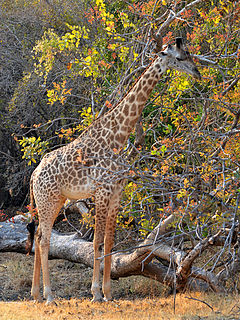 W
WThe Rhodesian giraffe, more commonly known as Thornicroft’s giraffe, is a subspecies of giraffe. It is sometimes deemed synonymous with the Luangwa giraffe. It is geographically isolated, occurring only in Zambia’s South Luangwa Valley. An estimated 550 live in the wild, with no captive populations. The lifespan of the Rhodesian giraffe is 22 years for males and 28 years for females. The ecotype was originally named after Harry Scott Thornicroft, a commissioner in what was then North-Western Rhodesia and later Northern Rhodesia.
 W
WThe Sakeji horseshoe bat is a species of bat in the family Rhinolophidae. It is endemic to Zambia. Its natural habitats are subtropical or tropical dry forest, subtropical or tropical moist lowland forest, and moist savanna, especially Zambia, Mwinilunga District, Ikelenge Pedicle between the Sakeji and Zambezi rivers, approximately 11 km NNE of source of Zambezi River, Kavunda, 11°17'S, 24°21'E, 1,388 m. It is threatened by habitat loss. It was discovered in 2000.
 W
WThe serval is a wild cat native to Africa. It is rare in North Africa and the Sahel, but widespread in sub-Saharan countries except rainforest regions. On the IUCN Red List it is listed as Least Concern. Across its range, it occurs in protected areas, and hunting it is either prohibited or regulated in range countries.
 W
WSharpe's or northern grysbok is a small, shy, solitary antelope that is found from tropical to south-eastern Africa.
 W
WAnsell's shrew is a species of mammal in the family Soricidae. It is endemic to Zambia. Its natural habitat is subtropical or tropical moist lowland forests. It is threatened by habitat loss.
 W
WPitman's shrew is a species of mammal in the family Soricidae. It is endemic to Zambia.
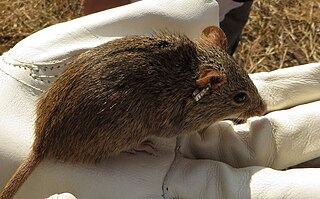 W
WThe single-striped grass mouse or single-striped lemniscomys is a species of rodent in the family Muridae.
 W
WThe sitatunga or marshbuck is a swamp-dwelling antelope found throughout central Africa, centering on the Democratic Republic of the Congo, the Republic of the Congo, Cameroon, parts of Southern Sudan, Equatorial Guinea, Burundi, Ghana, Botswana, Rwanda, Zambia, Gabon, the Central African Republic, Tanzania, Uganda and Kenya. The sitatunga is confined to swampy and marshy habitats. Here they occur in tall and dense vegetation as well as seasonal swamps, marshy clearings in forests, riparian thickets and mangrove swamps.
 W
WThe south-central black rhinoceros or south-central hook-lipped rhinoceros is a subspecies of the black rhinoceros. In line with the rules of zoological nomenclature, the South-central black rhinoceros should be known as Diceros bicornis keitloa, a nomen novum. Although it was the most numerous of the black rhino subspecies it is still listed as critically endangered by the IUCN red list. Like other black rhino subspecies it has a prehensile lip and lives in savanna habitat.
 W
WThe southern giant pouched rat is a species of rodent in the family Nesomyidae. It is distributed in the savannah of East and Southern Africa.
 W
WThe southern white rhinoceros or southern square-lipped rhinoceros, is one of the two subspecies of the white rhinoceros. It is the most common and widespread subspecies of rhinoceros.
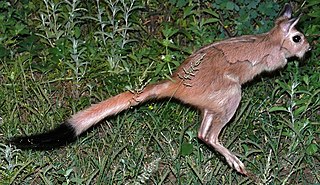 W
WThe South African springhare, or springhaas in Afrikaans, is not actually a hare, but a large and unusual rodent. It is one of two extant species in the genus Pedetes, and is native to southern Africa. Formerly, the genus was considered monotypic and the East African springhare was included in P. capensis. Though the species look alike at a casual glance, scientific study can easily determine which is which.
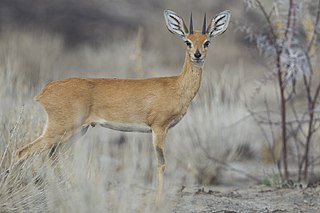 W
WThe steenbok is a common small antelope of southern and eastern Africa. It is sometimes known as the steinbuck or steinbok.
 W
WThe blue wildebeest, also called the common wildebeest, white-bearded wildebeest, or brindled gnu, is a large antelope and one of the two species of wildebeest. It is placed in the genus Connochaetes and family Bovidae, and has a close taxonomic relationship with the black wildebeest. The blue wildebeest is known to have five subspecies. This broad-shouldered antelope has a muscular, front-heavy appearance, with a distinctive, robust muzzle. Young blue wildebeest are born tawny brown, and begin to take on their adult coloration at the age of 2 months. The adults' hues range from a deep slate or bluish-gray to light gray or even grayish-brown. Both sexes possess a pair of large curved horns.